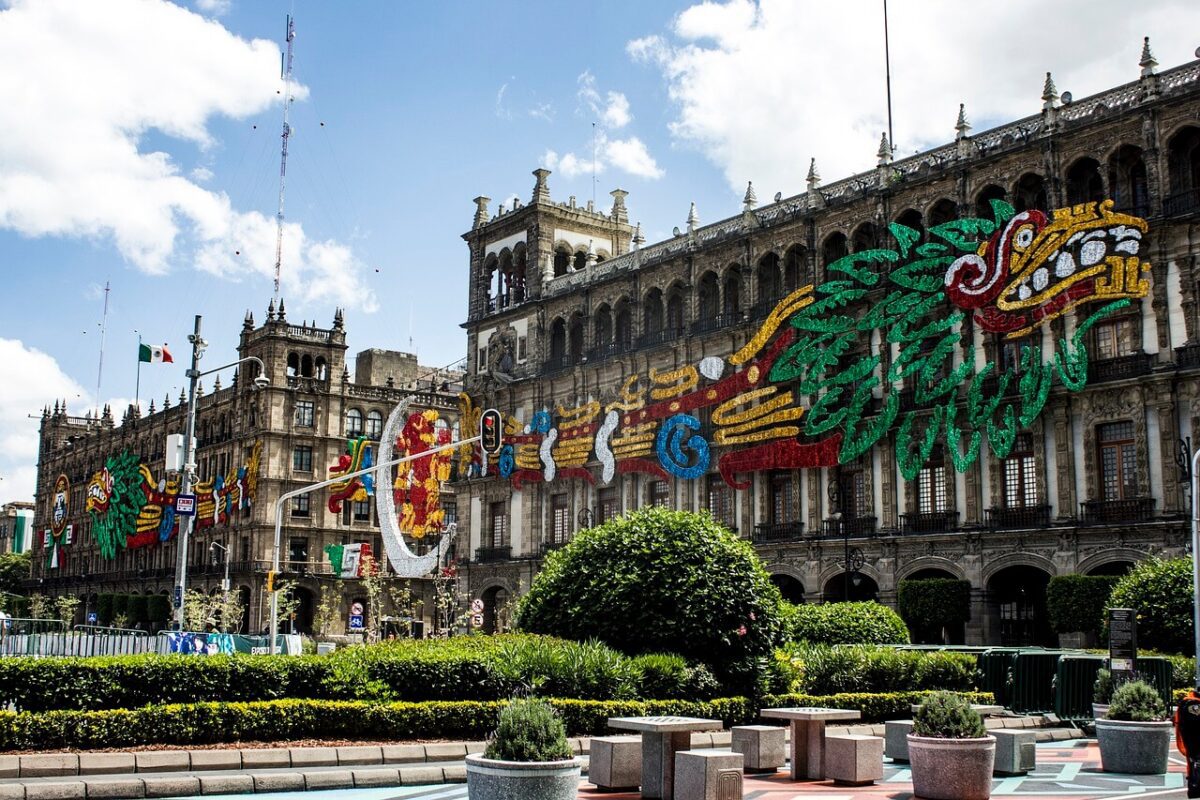What happened before I went to places to see in Mexico City?
My first day in Mexico City was Día De Los Muertos (Day of the Dead).
I was blown away with this fiesta so full of colors and so full of … life.
Never in my life had I seen so many people in one place.
I knew it was a special day. And I thought it would go back to the “normal” city explorer life the next day.
But, guess what. It didn’t.
The Day of the Dead was just the beginning of my adventure with Mexico City.
It did start on a high note. And the next days that followed only tuned up my experience, making my stay there so exceptional, so unbelievable and so unforgettable.
So…
¡Bienvenido a la ciudad de México!
Discover with me the vibrant heart of Mexico City, a city where ancient history meets modern flair.
Picture yourself wandering through bustling markets, each step revealing a new, colorful treasure.
Imagine gazing at grand, awe-inspiring Aztec ruins, standing tall amidst sleek skyscrapers.
Feel the pulse of lively neighborhoods, each with its own unique charm, welcoming you with open arms.
Mexico City invites you to lose yourself in its endless cultural experiences and unforgettable moments.
Join me on this journey, where every corner holds a story waiting to be discovered.
Let’s explore why Mexico City is not just a destination, but a feeling, an adventure that calls to the soul of every traveler.
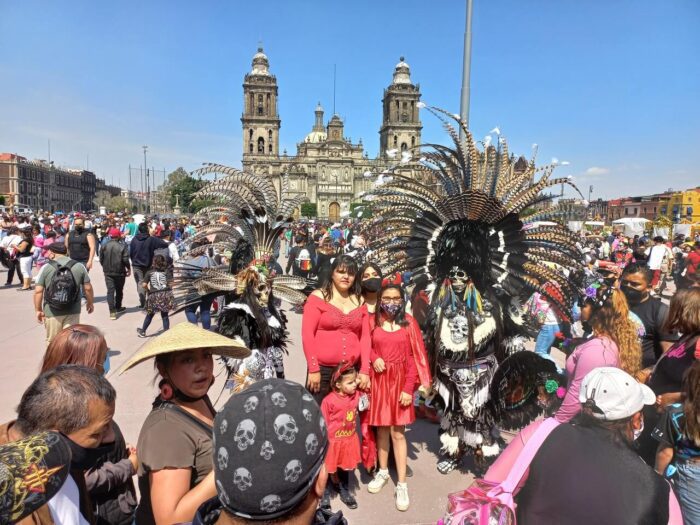
My top 10 places to see in Mexico City
In alphabetical order.
Chapultepec Park and Castle
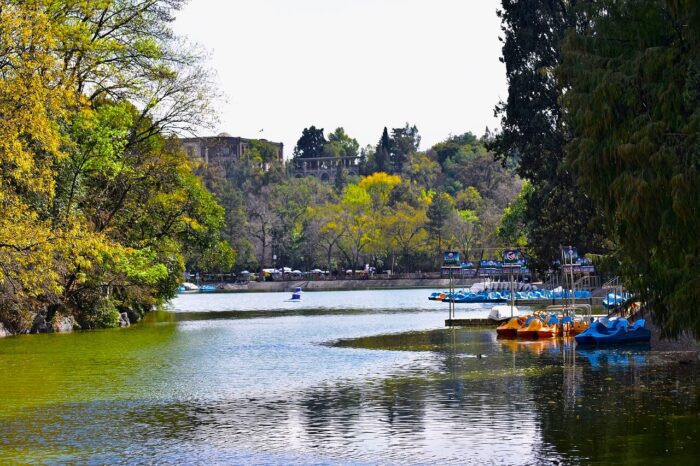
Did you know…?
This sprawling green oasis was once the exclusive retreat of Emperor Maximilian I.
Imagine strolling the same paths once graced by royalty, surrounded by lush gardens and serene lakes.
Chapultepec isn’t just a park; it’s a royal getaway in the heart of Mexico City.
Uncover hidden tales of its imperial past and feel like royalty for a day.
This gem, nestled in the city’s bustling life, offers a unique glimpse into Mexico’s rich history.
Get ready to explore a side of Chapultepec Park that few know, where every turn tells a story of grandeur and intrigue.
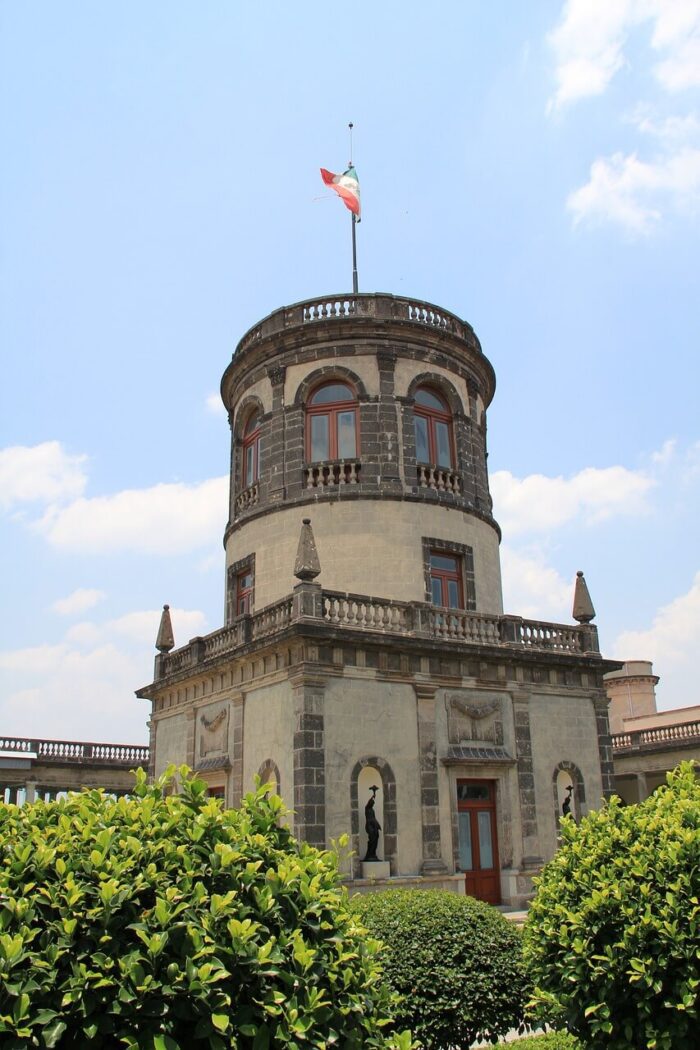
What are Chapultepec Park and Castle and why see them?
Chapultepec Park, a verdant expanse in the heart of Mexico City, beckons with its lush tranquility.
Here lies Chapultepec Castle, perched atop a hill, majestic and steeped in history.
This castle, unique in the Americas, has served as a royal residence, an observatory, and even a military academy.
Visitors can explore ornate rooms, rich with historical artifacts, offering a glimpse into Mexico’s diverse past.
The park itself, the city’s green lung, boasts sprawling gardens, tranquil lakes, and winding paths.
It’s a haven for relaxation and cultural immersion.
Whether you’re marveling at the castle’s grandeur or enjoying a peaceful stroll, Chapultepec offers an unrivaled blend of history, nature, and beauty.
It’s a must-visit for anyone seeking a serene escape within the bustling city.
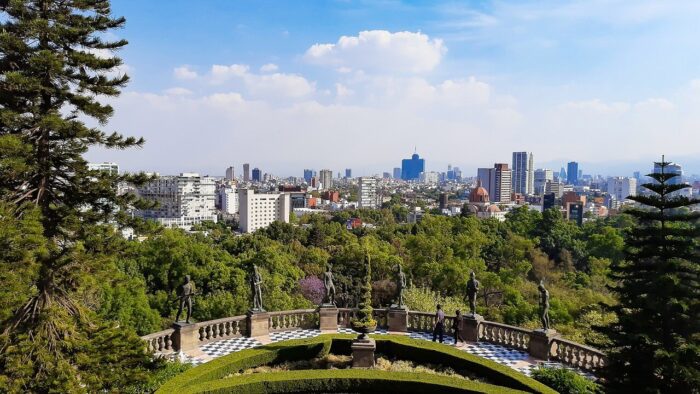
How to enjoy Chapultepec Park and Castle?
Chapultepec Park is easily reachable by metro, with Chapultepec station as your gateway.
Upon arrival, embrace the vibrant energy of this urban oasis.
Dive into its rich history and natural beauty by starting early; the park awakens with the city.
Remember, the park’s size can be deceiving, so plan your route to include must-see spots like the castle, the zoo, and the various museums.
Chapultepec offers a blend of tranquility and cultural richness, making it a must-visit for any traveler in Mexico City.
More information: Chapultepec Park website
La Ciudadela Market
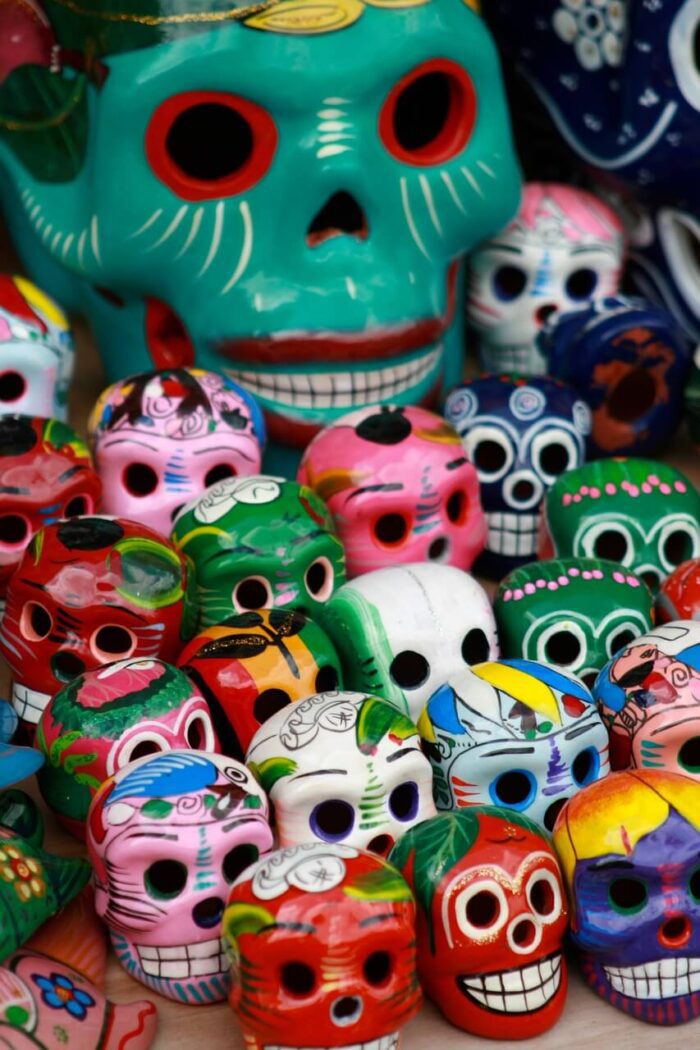
Did you know…?
La Ciudadela Market isn’t just a marketplace; it’s a living museum of Mexican craftsmanship.
Hidden within its vibrant stalls is a unique tradition: the art of “alebrijes.”
These colorful, fantastical creatures, born from the imagination of Mexican artisans, tell a story of creativity and cultural fusion.
As you explore, you’ll discover each alebrije has its own tale, a blend of myth and artisan’s personal touch.
This market offers more than just souvenirs; it’s a journey into the heart of Mexico’s artistic soul.
Unearth the secrets behind these magical figures and take home not just a piece of art, but a piece of Mexican folklore.
Let La Ciudadela surprise you with its depth and charm, revealing layers of culture waiting to be explored.
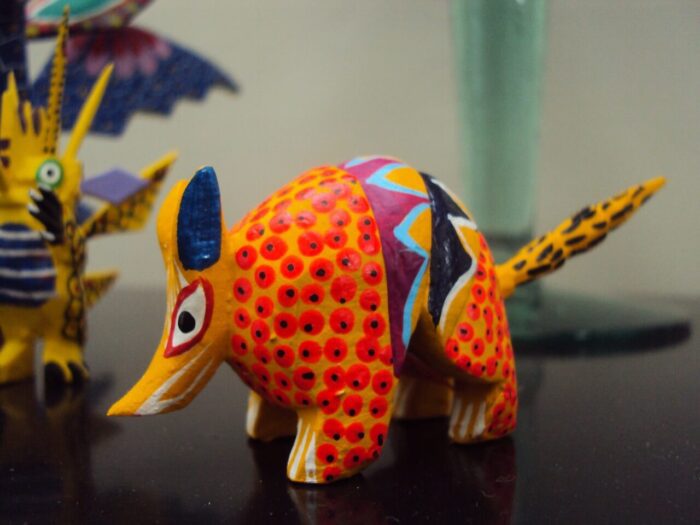
What is La Ciudadela Market and why see it?
La Ciudadela Market, a vibrant hub in Mexico City, captivates with its explosion of colors and crafts.
This bustling market is the go-to destination for authentic Mexican handicrafts.
Its aisles brim with artisanal treasures, from intricate textiles to hand-painted ceramics.
Each stall showcases the rich diversity of Mexico’s regional arts.
Here, visitors can interact with local artisans, gaining insights into the traditions behind their crafts.
The market’s lively atmosphere, filled with the sounds of bargaining and cultural exchange, adds to its charm.
Whether you’re searching for unique souvenirs or just soaking in the local culture, La Ciudadela offers an immersive experience.
It’s a place where art, history, and commerce dance together, providing a snapshot of Mexico’s vibrant cultural tapestry.
La Ciudadela isn’t just a market; it’s a celebration of Mexican heritage, making it a must-visit for anyone wanting to experience the heart of Mexico City.
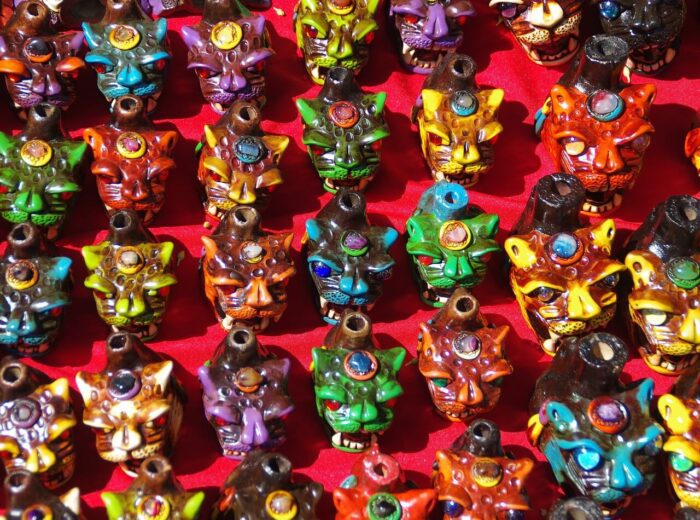
How to enjoy La Ciudadela Market?
To reach this artisan haven, take the metro (Balderas station) and follow the signs leading to the market’s vibrant entrance.
For the best experience, visit during morning or early afternoon, when the market buzzes with activity yet isn’t too crowded.
Bring cash, preferably in smaller denominations, for smooth transactions.
Haggling is part of the experience, but always do so respectfully.
Dive into the rich tapestry of Mexican culture with an open mind; engage with the artisans to learn the stories behind their crafts.
La Ciudadela is more than a shopping destination; it’s a cultural journey, offering a glimpse into the heart of Mexico’s artistic spirit.
More information: La Ciudadela website
Coyoacán District
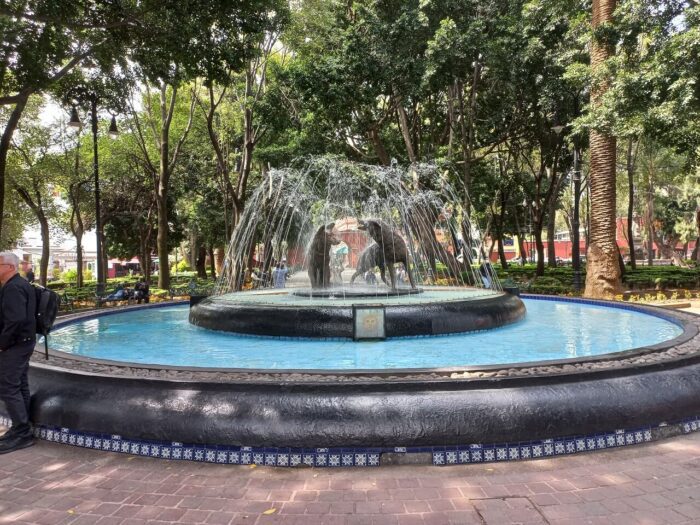
Did you know…?
Coyoacán District, known for its artistic vibe, hides a delightful secret: it was once a favorite retreat for famous painters like Frida Kahlo and Diego Rivera.
This quaint area, with its cobblestone streets and colorful houses, served as a muse for their iconic works.
As you stroll through Coyoacán, you’re walking in the footsteps of artistic legends.
Beyond its well-known attractions, the district offers hidden corners where art and history intertwine.
Discover tucked-away cafes and galleries that continue to inspire local artists.
Coyoacán isn’t just a district; it’s a canvas that has captured the imagination of artists for generations.
Explore its charming streets and uncover the artistic soul that pulses beneath, making every visit a journey through Mexico’s rich cultural heritage.
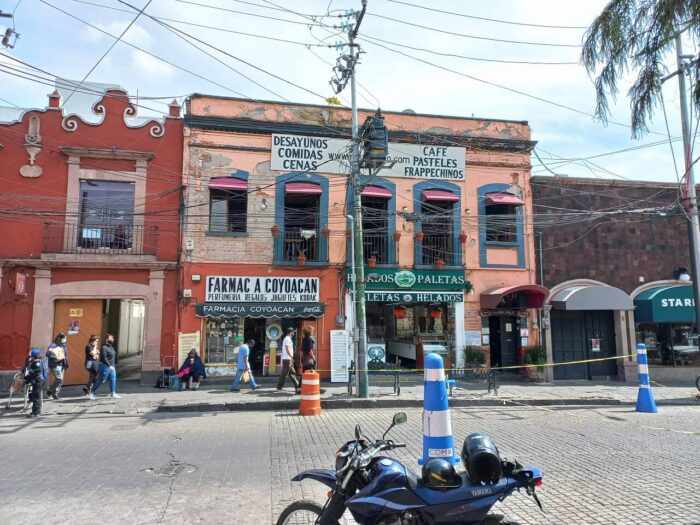
What is Coyoacán District and why see it?
Coyoacán District, a gem in Mexico City, exudes a unique charm with its bohemian ambiance and rich cultural heritage.
Once a village outside the city, it now stands as a vibrant artistic enclave.
Its narrow, tree-lined streets and colorful colonial buildings evoke a sense of stepping back in time.
The district is famed for housing the Frida Kahlo Museum, nestled in the iconic Casa Azul, where the painter’s spirit lingers.
Plazas like Jardín Centenario and Plaza Hidalgo burst with life, offering a glimpse into the local lifestyle.
Street markets, quaint cafes, and artisanal shops add to its allure.
Coyoacán is not just a district; it’s a cultural experience, inviting visitors to immerse themselves in a world where art, history, and tradition blend seamlessly.
Its laid-back atmosphere makes it a perfect escape from the city’s hustle, offering a peaceful yet vibrant exploration of Mexico’s artistic soul.
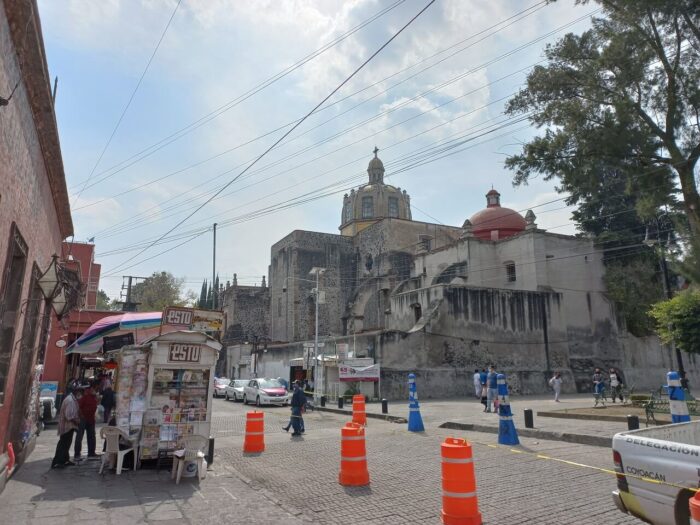
How to enjoy Coyoacán District?
Coyoacán District is located in the southern part of Mexico City, easily accessible via the metro; the nearest stations are Coyoacán and Viveros.
For a seamless journey, opt for a metro ride, immersing yourself in local life.
Upon arrival, embrace the district’s laid-back rhythm.
Wander leisurely to soak in its artistic ambiance fully.
Keep cash handy for local market purchases and savoring street food delights.
While Coyoacán is generally safe, remain mindful of your belongings, as you would in any popular tourist area.
Engage with the local culture and history; visit iconic spots like the Frida Kahlo Museum but also venture into lesser-known areas for a more authentic experience.
Coyoacán offers a blend of tranquility and cultural richness, making it a must-visit for those seeking to experience the heart of Mexico City’s artistic heritage.
More information: Coyoacan district website
The National Museum of Anthropology
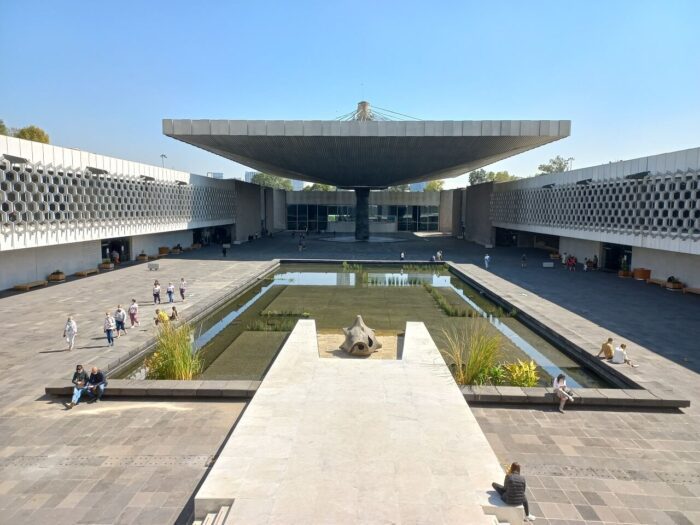
Did you know…?
In the National Museum of Anthropology, there’s a lesser-known marvel: the Umbrella Fountain.
This striking structure, designed by architect Pedro Ramírez Vázquez, isn’t just a fountain; it’s a symbol of unity.
The fountain’s design, inspired by both modern art and ancient motifs, represents the coming together of Mexico’s diverse cultures.
As water cascades down its sides, it mirrors the flow of time, connecting the ancient past with the present.
Visitors often overlook this architectural masterpiece, yet it holds deep significance, embodying the museum’s mission to bridge cultures and epochs.
Discovering the Umbrella Fountain’s story enriches your visit, offering a moment of reflection on Mexico’s rich, multifaceted heritage.
This hidden gem, amidst the museum’s vast collections, serves as a reminder of the continuous, harmonious flow of history.
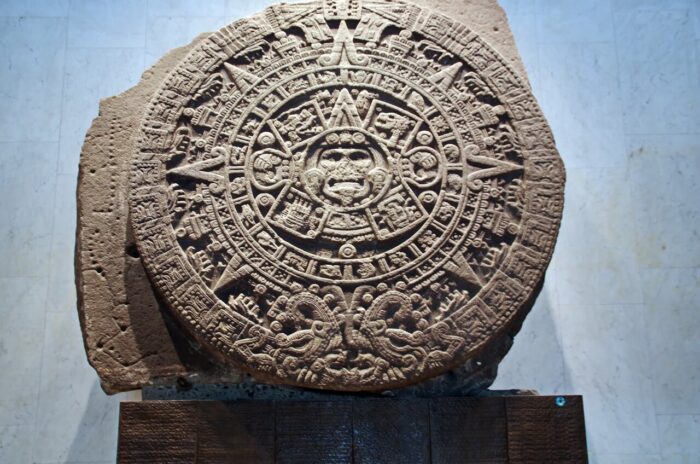
What is The National Museum of Anthropology and why see it?
The National Museum of Anthropology in Mexico City is a world-renowned treasure trove of pre-Columbian history.
Esteemed as one of the most significant museums of its kind, it offers a deep dive into Mexico’s rich indigenous cultures.
The museum boasts an impressive array of artifacts, each telling a story of the country’s ancient civilizations.
Three main attractions stand out: the colossal Stone of the Sun, often associated with the Aztec calendar, captures the imagination with its intricate carvings.
The Jade Mask of the Zapotec Bat God mesmerizes with its detailed craftsmanship, symbolizing Mesoamerican religious beliefs.
Lastly, the replica of Pakal’s tomb from Palenque offers a glimpse into the mystical world of the Maya.
These artifacts, among countless others, make the museum a must-visit for anyone seeking to understand the depth and diversity of Mexico’s ancestral heritage.
The museum’s unique combination of historical artifacts, cultural depth, and architectural grandeur offers an unforgettable journey through time.
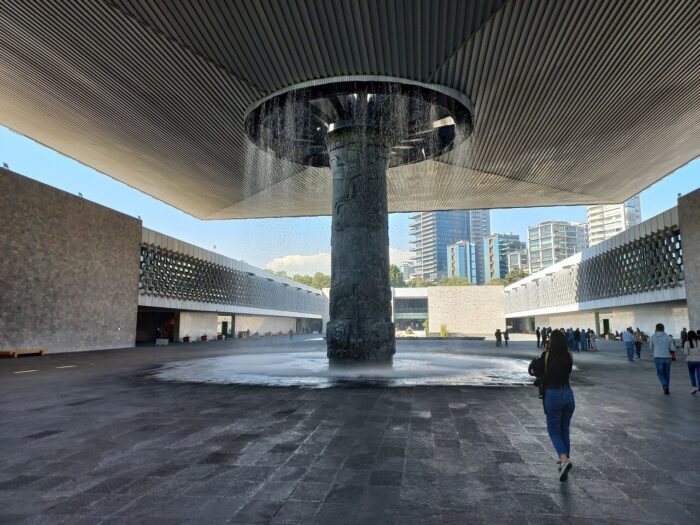
How to enjoy the National Museum of Anthropology?
The National Museum of Anthropology is located in Mexico City’s Chapultepec Park.
To get there, take the metro to Auditorio station and enjoy a scenic walk through the park to the museum.
For a hassle-free visit, aim to arrive early, as the museum opens its doors at 9 AM.
Allocate enough time, ideally a full day, to truly appreciate its extensive collections. Bring water and snacks, or plan to visit the museum’s cafe for refreshments.
Photography is allowed, but remember to turn off the flash to protect the artifacts.
Stay mindful of museum etiquette, respecting the exhibits and other visitors’ experiences.
The museum offers guided tours for a more in-depth understanding, which can greatly enhance your visit.
This world-class museum promises a rich, educational experience, offering insights into Mexico’s ancient civilizations.
More information: National Museum of Anthropology website
Palacio de Bellas Artes
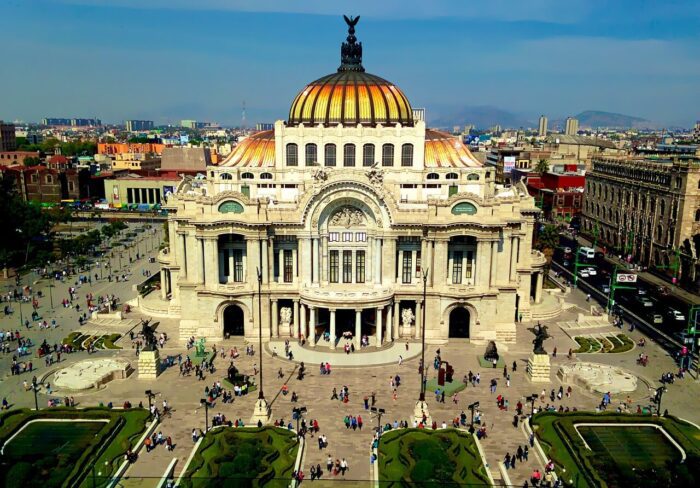
Did you know…?
Palacio de Bellas Artes, Mexico City’s iconic cultural venue, holds a unique marvel: its curtain is not fabric, but a stunning glass mosaic.
Crafted by the famous Tiffany & Co. of New York, this masterpiece is one of the largest stained-glass curtains in the world.
Depicting the Valley of Mexico with its two prominent volcanoes, this curtain is a fusion of art and engineering.
Few visitors are aware of its international origins and intricate design, making it a fascinating discovery.
As the curtain rises, it’s not just a performance that awaits, but a glimpse into a blend of Mexican scenery and American craftsmanship.
This unexpected highlight adds to the allure of Palacio de Bellas Artes, offering visitors an extraordinary experience that transcends typical theater visits.
Discovering this exquisite piece adds a layer of awe to the already majestic ambiance of the palace.
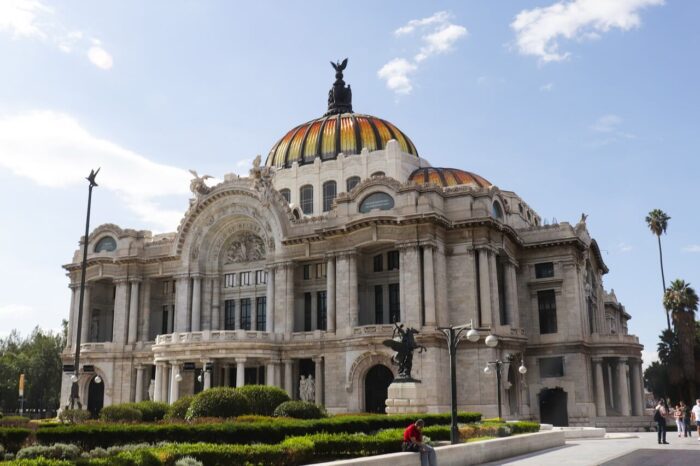
What is Palacio de Bellas Artes and why see it?
Palacio de Bellas Artes in Mexico City stands as an architectural and cultural masterpiece, renowned for its stunning fusion of Art Nouveau and Art Deco styles.
This magnificent building, with its iconic domed roof and marble facade, is a beacon of artistic expression.
Inside, three main attractions captivate visitors: the breathtaking Tiffany glass curtain, depicting a vivid scene of the Valley of Mexico, is a marvel of craftsmanship and a rare artistic gem.
The palace’s murals, painted by famous Mexican artists like Diego Rivera and David Alfaro Siqueiros, offer a vibrant portrayal of Mexico’s history and social struggles.
Additionally, the main theater, an opulent space hosting world-class performances, immerses audiences in an atmosphere of elegance and cultural richness.
These features, along with its rotating exhibitions and concerts, make Palacio de Bellas Artes not just a visit but an experience, merging art, history, and beauty in a truly unique way.
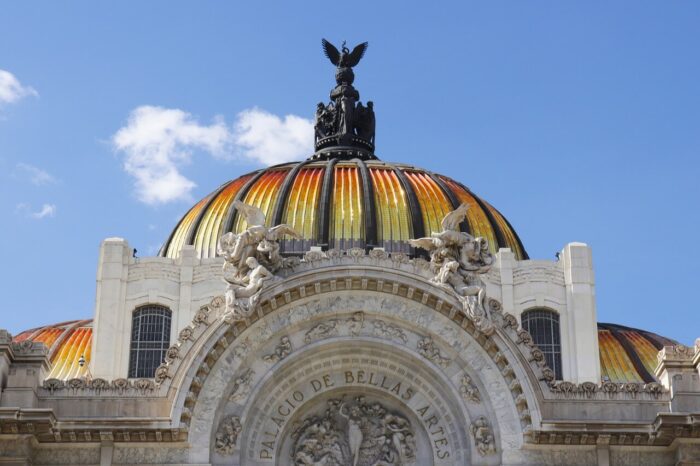
How to enjoy Palacio de Bellas Artes?
Palacio de Bellas Artes sits in the heart of Mexico City, easily accessible via the metro; the Bellas Artes station is your closest stop.
Upon arrival, the palace’s imposing structure immediately captivates.
Plan your visit for mid-morning or early afternoon to avoid larger crowds and fully appreciate its beauty.
Comfortable footwear is a must for exploring the spacious interiors and nearby Alameda Central Park.
Be sure to check the event schedule in advance, as the palace hosts various performances and exhibitions that might interest you.
Photography is allowed, but without flash, to preserve the art.
Inside, allow yourself to be immersed in the artistic atmosphere, taking time to absorb the stunning murals and architecture.
Palacio de Bellas Artes offers a blend of art, history, and culture, making it a must-visit for any traveler seeking to experience Mexico City’s rich artistic heritage.
More information: Palacio de Bellas Artes website
Templo Mayor
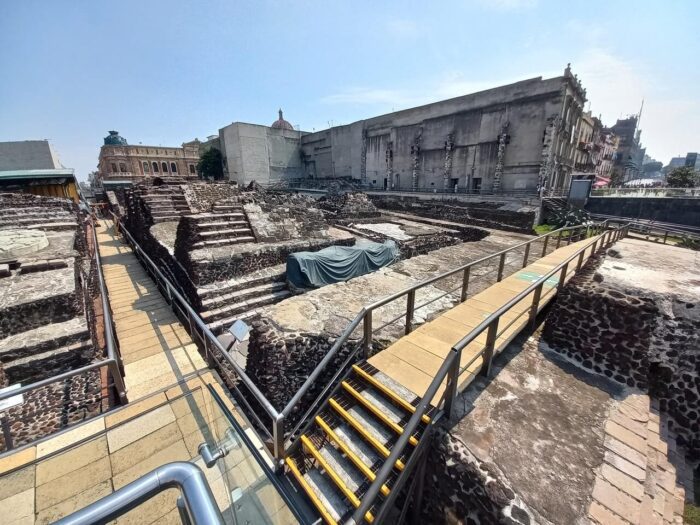
Did you know…?
Templo Mayor, a remarkable Aztec ruin in Mexico City, harbors a fascinating secret: it’s a historical palimpsest, built in seven layers.
Each layer represents a different stage in Aztec history, mirroring the reigns of various rulers.
As you explore this ancient site, you’re literally walking through centuries of history, stacked one atop the other.
Archaeologists have uncovered these layers, revealing a complex tapestry of beliefs, rituals, and architecture.
This multi-layered structure isn’t just a ruin; it’s a chronological story of the Aztec empire, hidden beneath the bustling city.
Few visitors know they’re standing amidst such a richly stratified historical record.
Discovering this about Templo Mayor adds depth to your visit, transforming it into a journey through time, peeling back layers of the past in the heart of modern Mexico City.
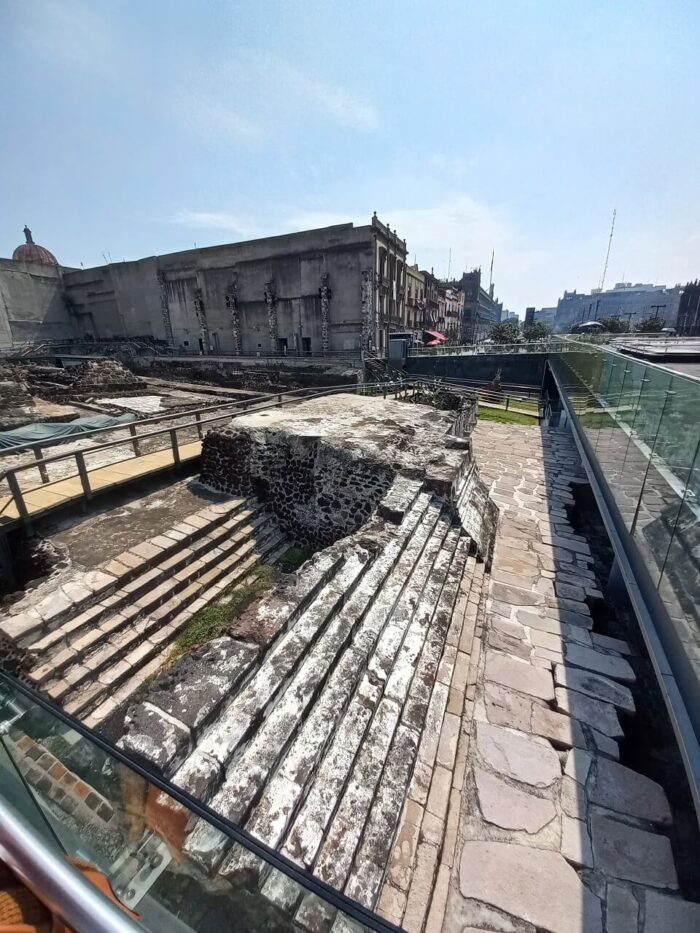
What is Templo Mayor and why see it?
Templo Mayor, located in the heart of Mexico City, is a testament to the grandeur of the Aztec civilization.
This ancient temple, once central to Aztec religious life, now lies as a fascinating archaeological site.
It’s special for its rich historical significance and its role in understanding pre-Columbian cultures.
Three key attractions stand out: the main pyramid structure, a monumental testament to Aztec architecture and their devotion to the gods.
The Templo Mayor Museum, adjacent to the ruins, houses an impressive collection of artifacts unearthed from the site, including intricate sculptures and relics.
Additionally, the Wall of Skulls, a recent discovery, offers a chilling yet captivating insight into Aztec rituals and beliefs.
Each element of Templo Mayor provides a unique glimpse into a civilization that once thrived where modern Mexico City now stands.
Visiting Templo Mayor is not just a tour; it’s an immersive journey into Mexico’s ancient past, making it an essential experience for history enthusiasts and casual visitors alike.
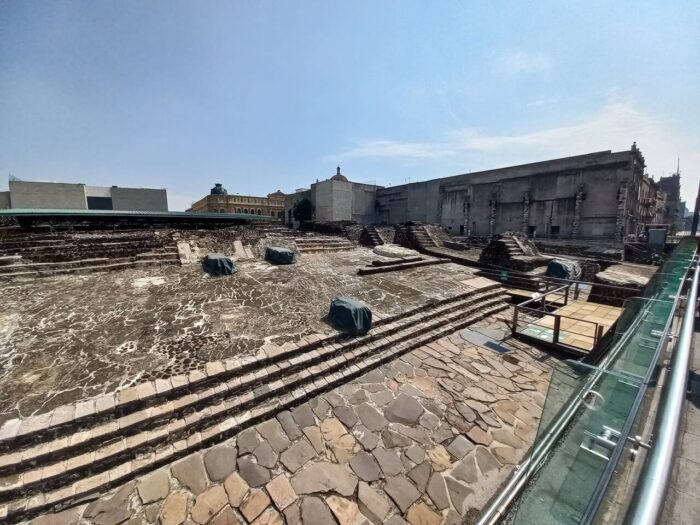
How to enjoy Templo Mayor?
Templo Mayor is located in the historic center of Mexico City, just northeast of the Zócalo or main plaza.
To reach this ancient Aztec site, take the metro to the Zócalo station, which puts you within walking distance.
Plan to visit early in the day to avoid crowds and experience the site in a more tranquil setting.
Bring a hat and sunscreen, as much of the area is exposed and sunny.
Remember, photography is allowed, but without flash to protect the artifacts.
Be prepared for a significant amount of walking and climbing, as the site is expansive.
Carrying minimal belongings ensures a more comfortable visit.
Respect the site’s rules and boundaries to preserve its integrity.
Visiting Templo Mayor offers a unique opportunity to connect with the rich history of Mexico City, making it a rewarding experience for those intrigued by ancient civilizations.
More information: Templo Mayor website
Teotihuacan
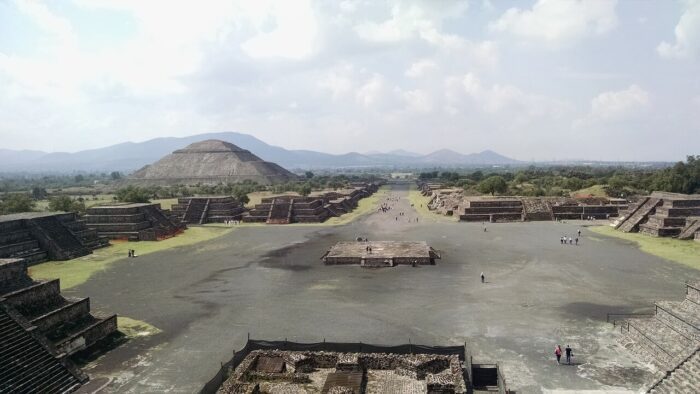
Did you know…?
Teotihuacan, known for its majestic pyramids, conceals a mysterious underground world.
Recently, archaeologists discovered a vast network of tunnels beneath the Pyramid of the Sun.
These tunnels, believed to represent the underworld in Teotihuacan cosmology, offer a new perspective on ancient rituals and beliefs.
As you stand atop the sun-drenched pyramids, imagine the hidden labyrinthine passages below, silently holding centuries of secrets.
This discovery challenges previous understandings of Teotihuacan, adding an exciting layer of mystery to the site.
These underground tunnels are not accessible to visitors, but knowing they exist beneath your feet transforms your experience.
It’s a thrilling thought that as you explore the ancient city’s surface, an entire hidden world lies just beneath, waiting to unveil more of Teotihuacan’s enigmatic past.
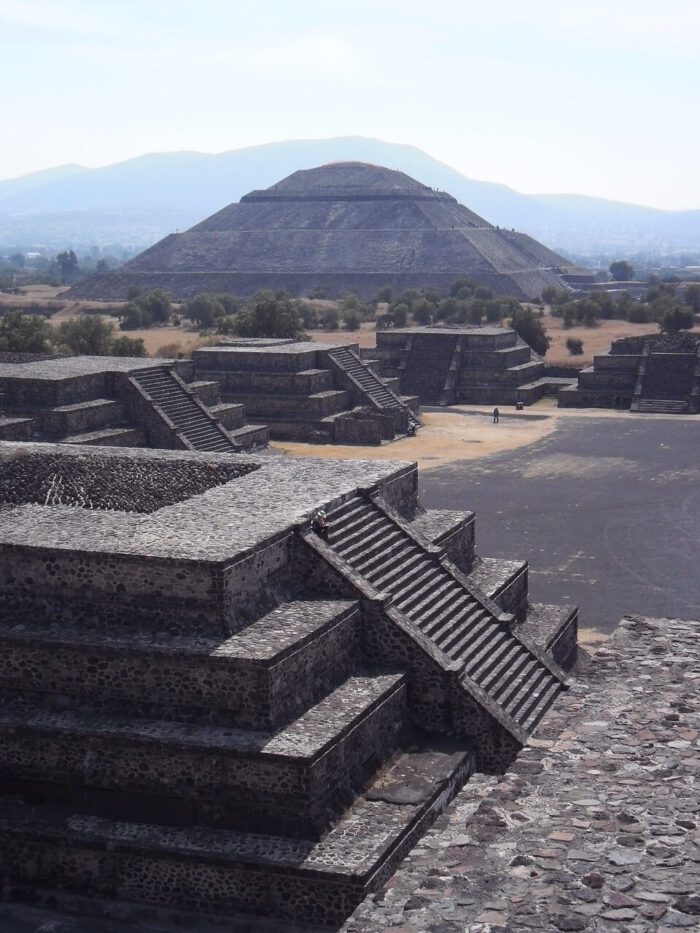
What is Teotihuacan and why see it?
Teotihuacan, a UNESCO World Heritage site near Mexico City, stands as one of the most significant archaeological wonders of Mesoamerica.
This ancient city, dating back to around 100 BC, was once a thriving metropolis and holds immense historical and cultural significance.
Its grandeur is evident in its meticulously planned urban layout, symbolic artwork, and architectural achievements.
The three main attractions that captivate visitors are the Pyramid of the Sun, one of the largest structures of its kind in the Western Hemisphere, offering breathtaking views from its summit.
The Pyramid of the Moon, though smaller, provides a unique perspective of the Avenue of the Dead, the main artery of the city.
Lastly, the Temple of Quetzalcoatl, adorned with intricate stone carvings of the Feathered Serpent deity, is a masterpiece of religious and artistic significance.
Teotihuacan’s vast scale, architectural precision, and the air of mystery surrounding its original builders make it an essential visit for anyone interested in ancient civilizations, history, and architecture.
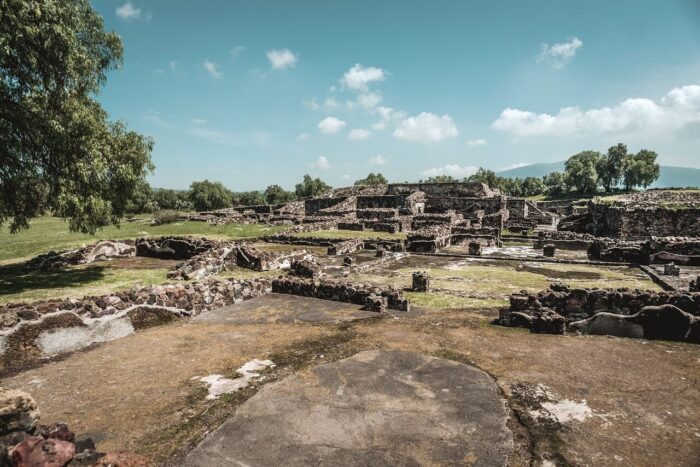
How to enjoy Teotihuacan?
Teotihuacan is situated about 50 kilometers northeast of Mexico City, making it an accessible day trip.
The easiest way to get there is by bus, departing from Mexico City’s North Bus Terminal (Autobuses del Norte) and heading directly to the pyramids.
To make the most of your visit, start early to beat the crowds and the midday heat.
Wear comfortable walking shoes and sun protection, as you’ll be exploring vast, open spaces with little shade.
Bring water and snacks, though there are vendors at the site.
Consider hiring a guide at the entrance for an informative tour, or use a guidebook to navigate and understand the historical context.
Respect the site’s rules; some areas may have restricted access to preserve their integrity.
Teotihuacan’s grandeur and mystery make it a must-visit, offering a profound glimpse into ancient Mesoamerican life and culture.
More information: Teotihuacan website
Zócalo (Plaza de la Constitución)
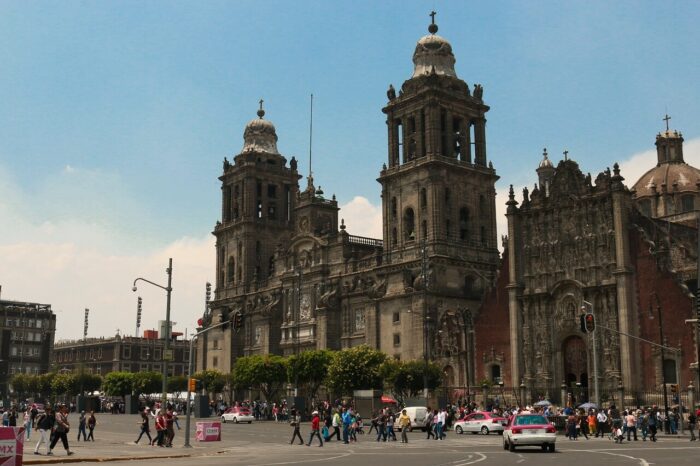
Did you know…?
Beneath Zócalo, Mexico City’s main square, lies a hidden treasure: an ancient Aztec ball court.
Discovered during excavations, this court was a crucial part of Aztec culture, hosting the ritualistic ballgame, Ōllamaliztli.
This discovery reveals that Zócalo, now a bustling hub, was once a center of Aztec social and ceremonial life.
Visitors often marvel at the square’s current vibrancy, unaware of the ancient sporting and cultural events that took place right under their feet.
This hidden history adds a layer of intrigue to Zócalo, transforming it from a modern urban space into a link to the rich, complex history of the Aztecs.
Knowing this, your walk across Zócalo becomes a journey through time, connecting you with a millennia-old tradition that once thrived in the very heart of modern Mexico City.
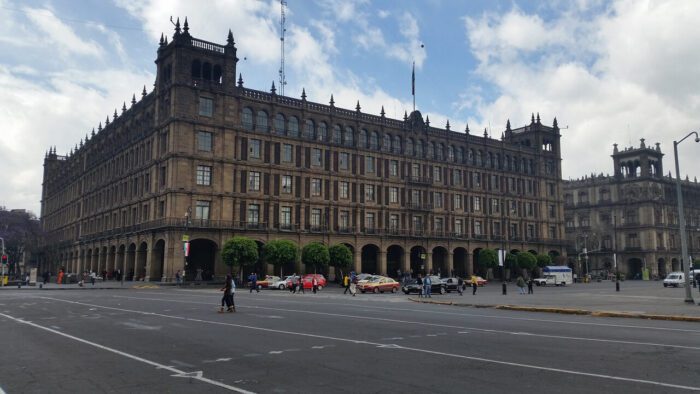
What is Zócalo and why see it?
Zócalo, officially known as Plaza de la Constitución, is the main square in the heart of Mexico City and one of the largest city squares in the world.
This historic plaza is a fusion of Mexico’s past and present, making it a must-visit for its cultural and historical significance.
Three main attractions around Zócalo include the majestic Metropolitan Cathedral, an architectural marvel with its mix of Renaissance, Baroque, and Neoclassical styles.
The National Palace, adorned with Diego Rivera’s famous murals, offers a vivid glimpse into Mexico’s history.
Lastly, the Templo Mayor, an Aztec archaeological site, reveals the ancient roots of this modern metropolis.
Zócalo is not just a square; it’s a living museum where festivals, protests, and daily urban life coalesce against a backdrop of monumental historical landmarks.
This dynamic blend of architecture, history, and culture makes Zócalo an essential experience for understanding Mexico’s multifaceted identity.
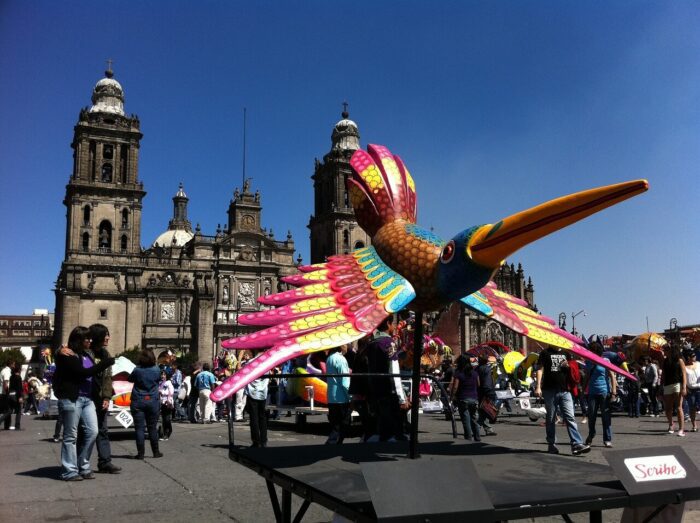
How to enjoy Zócalo?
Zócalo is centrally located in Mexico City, easily accessible by metro; the Zócalo station directly connects you to this historic square.
Upon arrival, immerse yourself in the vibrant atmosphere of this cultural hub.
To fully appreciate its grandeur, visit during the day when the surrounding buildings, including the Metropolitan Cathedral and the National Palace, are open for exploration.
For a deeper understanding of Zócalo’s historical significance, consider joining a guided tour.
These tours often delve into the rich history of the square and its surrounding landmarks.
Remember, Zócalo is more than a tourist spot; it’s a place where history, culture, and modern life converge, offering a unique glimpse into the heart of Mexico City.
Torre Latinoamericana
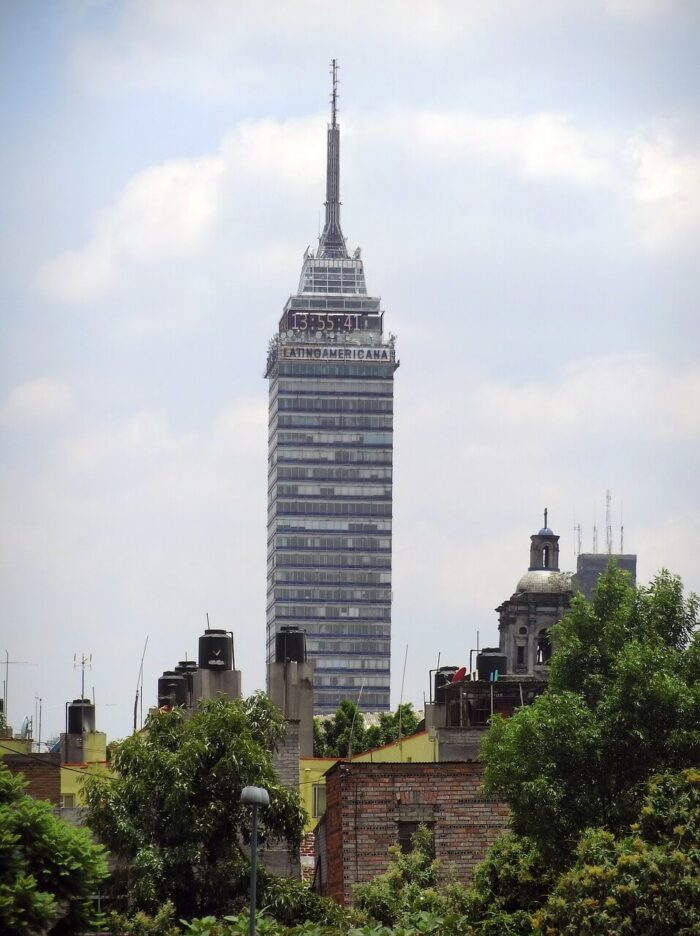
Did you know…?
Torre Latinoamericana, an iconic skyscraper in Mexico City, boasts a lesser-known fact that defies expectations: it’s one of the world’s most earthquake-resistant buildings.
Remarkably, it has withstood several major earthquakes, including the devastating 1985 and 2017 quakes.
This resilience is due to its unique deep foundation and flexible structure, engineering marvels at the time of its construction.
As you gaze up at its towering form, you’re not just looking at a skyscraper, but a testimony to pioneering architectural design.
Knowing this, your visit to Torre Latinoamericana transforms into an appreciation of not just its height and views, but also its remarkable ability to stand tall amidst the forces of nature.
This adds an intriguing layer to the tower’s history, making it not just a landmark, but a symbol of resilience in the face of adversity.
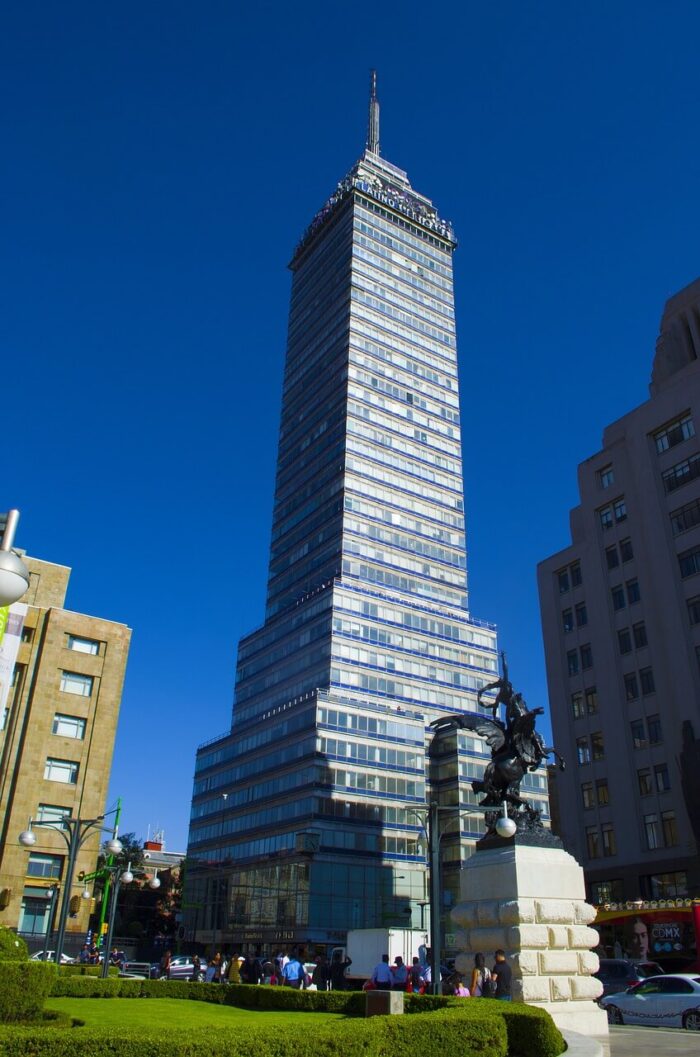
What is Torre Latinoamericana and why see it?
Torre Latinoamericana, a towering skyscraper in the heart of Mexico City, stands as a symbol of modern architectural achievement.
When completed in 1956, it was the tallest building in Latin America, showcasing cutting-edge design and engineering.
Three main attractions make this tower a must-visit: the observation deck, offering panoramic views of the sprawling city, is a highlight for breathtaking photographs and skyline appreciation.
The revolving restaurant provides a unique dining experience with a constantly changing cityscape backdrop.
Lastly, the on-site museum gives insight into the building’s history and engineering feats, enriching visitors’ understanding of this architectural marvel.
Torre Latinoamericana offers a blend of spectacular views, cultural significance, and engineering ingenuity, making it a standout destination in Mexico City’s vibrant urban landscape.
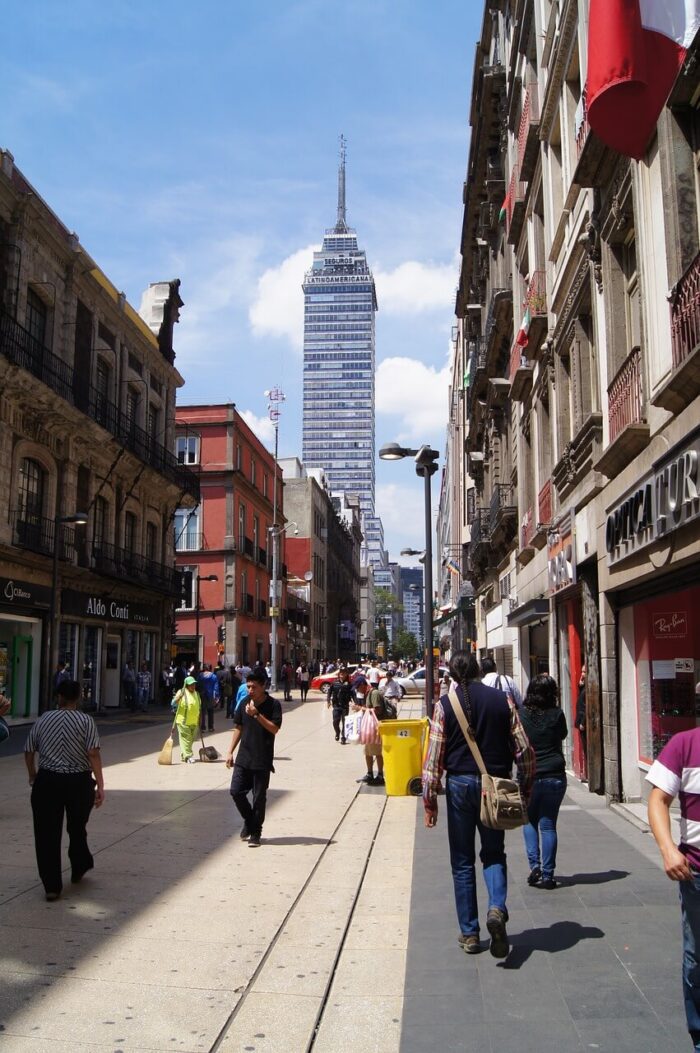
How to enjoy Torre Latinoamericana?
Torre Latinoamericana is located in the historic center of Mexico City, easily accessible by metro, with the Bellas Artes station being the closest stop.
For a hassle-free visit, aim to arrive early to beat the crowds, especially if you plan to visit the observation deck.
Elevators take you to the top, but be prepared for a possible wait during peak times.
Carry minimal items for convenience, and have your camera ready for the stunning views.
The tower’s location amidst other attractions like the Palacio de Bellas Artes and Zócalo makes it ideal for a day of exploration.
Remember, the weather can affect visibility from the observation deck, so check the forecast for clear skies to make the most of the panoramic views.
Visiting Torre Latinoamericana offers not only a spectacular view of the city but also a unique perspective on its resilience and architectural ingenuity.
More information: Torre Latinoamericana website
Xochimilco Canals
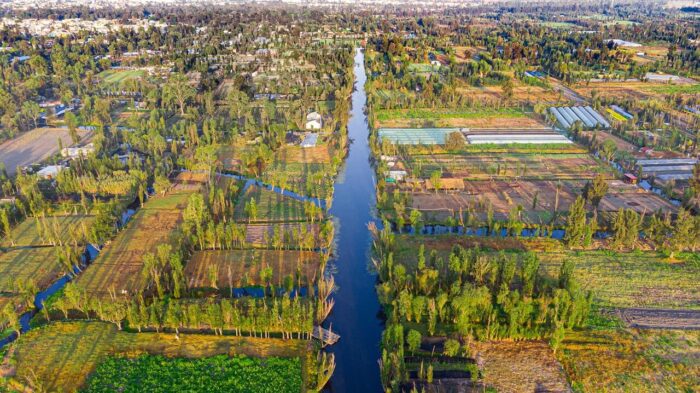
Did you know…?
Xochimilco Canals, famous for their colorful trajineras, hold a secret rooted in ancient agriculture: the chinampas.
These floating gardens, dating back to Aztec times, are an ingenious farming method still in use today.
As you glide along the canals, surrounded by vibrant life, you’re witnessing a living piece of history.
These chinampas, small, rectangular areas of fertile arable land, were created by the Aztecs to increase agricultural production.
Today, they continue to be cultivated, providing fresh produce to Mexico City.
This blend of historical tradition and sustainable agriculture adds a deeper significance to the picturesque canals of Xochimilco.
Knowing this, your boat ride becomes more than a scenic journey; it’s a voyage through time, connecting you to an ancient, still-thriving aspect of Mexican culture and ingenuity.
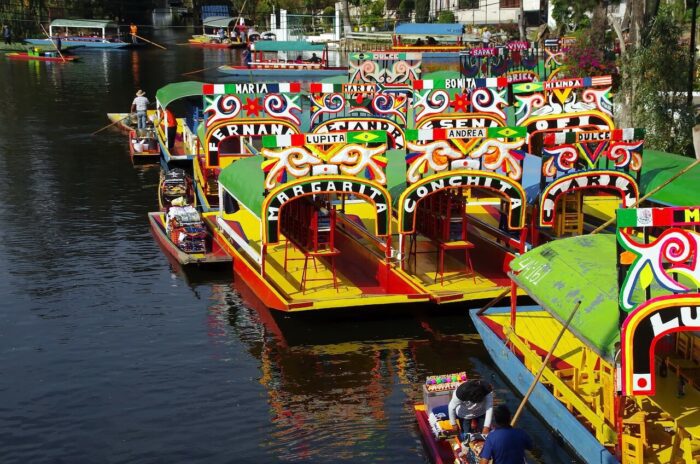
What is Xochimilco and why see it?
Xochimilco, a UNESCO World Heritage site in Mexico City, is renowned for its extensive network of canals and vibrant, traditional trajineras (flat-bottomed boats).
This unique area, often referred to as the “Venice of Mexico,” offers a glimpse into pre-Hispanic times when canals were a primary mode of transportation.
The main attractions that make Xochimilco special include the colorful trajinera rides, providing a festive and authentic way to explore the canals, often accompanied by mariachi music.
The chinampas, or floating gardens, showcase an ancient agricultural technique still used today, offering insight into sustainable farming practices.
Additionally, the Island of the Dolls, although somewhat eerie, attracts visitors with its intriguing and mysterious history.
Xochimilco’s combination of cultural history, lively atmosphere, and natural beauty makes it a unique and enchanting destination, offering a distinct and memorable experience of Mexico’s rich heritage.
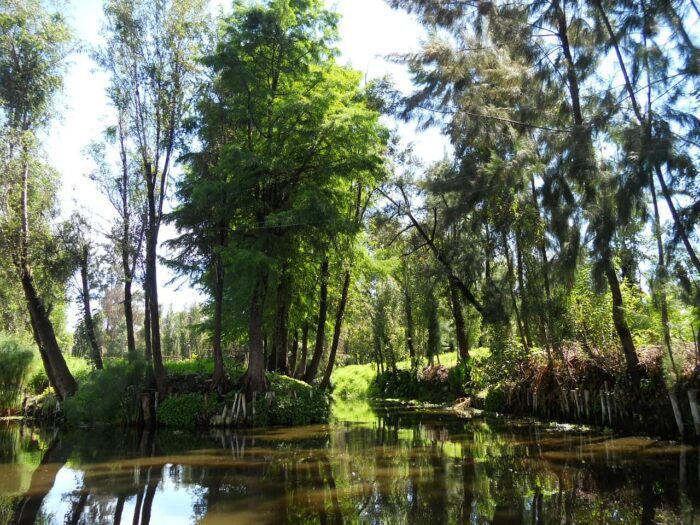
How to enjoy Xochimilco?
Xochimilco is located in the southern part of Mexico City.
The easiest way to get there is by taking the metro to Tasqueña station and then transferring to the Tren Ligero, which goes directly to Xochimilco.
Upon arrival, choose a reputable trajinera (boat) operator for your canal tour.
Agree on a price before boarding to avoid any surprises.
Weekends are lively but more crowded, so consider a weekday visit for a quieter experience.
Remember to bring cash, as many vendors and boat operators don’t accept cards.
Engaging with local mariachi bands or buying from vendors on the canals can enhance your experience.
Enjoy the unique atmosphere of Xochimilco, but be respectful of the environment and local culture, ensuring a memorable and authentic experience.
More information: Xochimilco Canals website
Conclusion
Mexico City, a tapestry of history and modernity, invites you to explore its wonders.
From the ancient mysteries of Templo Mayor and the pyramids of Teotihuacan to the architectural splendor of Palacio de Bellas Artes and Torre Latinoamericana, this city is a living museum of culture and innovation.
Wander through the vibrant streets of Coyoacán, tracing the steps of artistic legends, or lose yourself in the lively, historic Zócalo. Immerse in the traditional charm of Xochimilco’s canals and the bustling energy of La Ciudadela Market.
Each corner of Mexico City tells a story, blending the past and the present in a colorful mosaic.
Whether exploring hidden layers of history beneath your feet or marveling at the skyline from above, Mexico City promises a journey of discovery and wonder, beckoning travelers to experience its unique spirit and endless marvels.
Happy travel
Marcin
My top places to see in Mexico City
- Chapultepec Park and Castle
- La Ciudadela Market
- Coyoacán District
- The National Museum of Anthropology
- Palacio de Bellas Artes
- Templo Mayor
- Teotihuacan Pyramids
- Zócalo (Plaza de la Constitución)
- Torre Latinoamericana
- Xochimilco Canals
Useful links
Mexico City public transport website
Looking for more inspiration for places to visit?
The Best Of Europe: Top 10 Iconic Cities To Visit
The Best Of North America: Your Ultimate Guide To 10 Most Vibrant Cities

